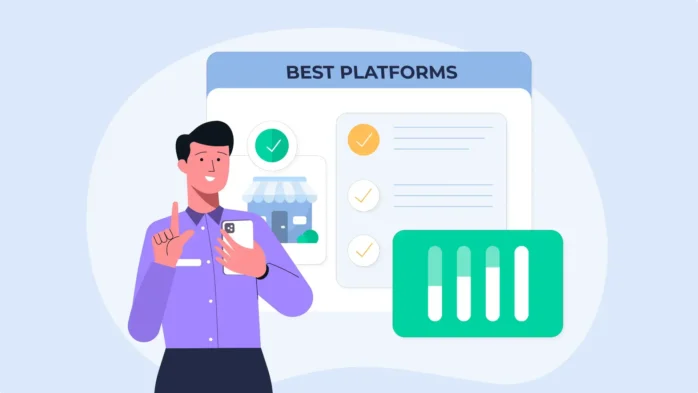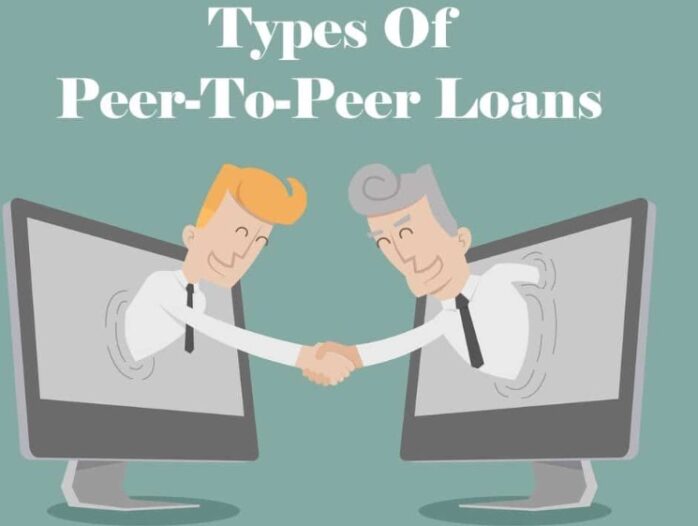Peer-to-peer (P2P) lending has been around for a few decades, but it is really only in the last few years that its popularity has grown exponentially. With this increase in interest and attention come some misconceptions about how P2P lending works – myths that can be easily debunked with just a little bit of research. In this article, we’ll explore some of the most common myths surrounding peer-to-peer lending to help you get an accurate understanding of what P2P lending is all about.
The first myth we’ll look at is that peer-to-peer lending isn’t safe or secure. This couldn’t be further from the truth! Every lender involved in a P2P loan agreement must adhere to strict regulations set out by the Financial Conduct Authority, meaning there are multiple layers of protection in place for both lenders and borrowers alike. Plus, every borrower’s credit history and financial situation are thoroughly vetted before any loans are approved so as to ensure everyone’s security and peace of mind.
Another often-heard myth about peer-to-peer lending is that it always carries very high-interest rates – more than those associated with traditional banking institutions such as banks or credit unions. However, the reality is that due to increased competition within the sector, rates have become increasingly competitive over recent years, allowing borrowers access to low-cost financing options they may not otherwise qualify for if using traditional methods alone.
What Is Peer-To-Peer Lending?

Peer-to-peer (P2P) lending is an increasingly popular way to borrow money and save on interest rates. It’s a type of alternative financing that cuts out the middleman, allowing borrowers to connect directly with lenders online. Through P2P loan platforms, individuals or businesses can get access to funds quickly without having to go through traditional banking channels.
However, many misunderstandings exist about how peer-to-peer lending works. Let’s look at some common myths related to this type of loan so you can make an informed decision before applying for one.
For starters, it isn’t necessary for lenders and borrowers to have any prior relationship in order for a P2P loan transaction to take place. Instead, these transactions are facilitated by third-party websites that provide secure mechanisms for connecting both parties. This means anyone who meets the criteria set up by the platform – such as age requirements and credit score – can apply for a loan from any lender they choose. Furthermore, applicants aren’t required to pay high fees or wait long periods of time for their applications to be processed like they would when dealing with banks.
Misconceptions Of Risk And Returns
One of the biggest misconceptions about P2P lending is that it carries more risk than traditional bank loans. But in reality, peer-to-peer lenders are just as cautious when assessing loan applications as banks and other financial institutions – if not more so. As a result, borrowers can be sure they’re getting an equally safe loan opportunity with competitive interest rates.
Another common myth is that you won’t make much money from being a lender on these platforms. While returns aren’t guaranteed, there’s potential for good returns depending on how well borrowers manage their debts. Of course, no one should expect to get rich overnight by becoming a P2P lender; however, providing capital through this method can provide steady income over time.
It’s important to remember that peer-to-peer lending is still relatively new and unproven compared to traditional financing methods. It may take some time before its advantages become clear enough for mainstream adoption. Nonetheless, it has already proven itself as an effective way to borrow or lend money for example like instant cash loans without having to go through conventional banking systems.
Legality Of P2P Platforms

When it comes to the legality of peer-to-peer lending, there are many misconceptions. In reality, P2P platforms are regulated by both federal and state laws in order to protect consumers from potential fraud or abuse. Here’s a quick overview of some important legal considerations when using these services:
- P2P lenders must follow all applicable regulations related to money laundering prevention, consumer financial protection, and data security.
- Platforms are required to hold borrowers’ funds securely until the loan is repaid or terminated. They also need to ensure that investors have access to relevant information about their investments so they can make informed decisions.
- All transactions on the platform should be transparent and open for public viewing as per government regulations. This helps protect both lenders and borrowers from unscrupulous practices or unfair terms.
- Some states may require certain licensing requirements for P2P providers depending on where you live, such as obtaining a Money Transmitter License (MTL) if operating across multiple locations within US borders.
- Most importantly, credit unions must comply with Truth in Lending Act (TILA) rules which require them to disclose full details regarding any fees associated with loans before consumers commit to taking out one.
Overall, governments around the world are increasingly recognizing the potential benefits of peer-to-peer lending and regulating accordingly. As long as users adhere to established standards and guidelines set forth by governing bodies, there shouldn’t be any major issues when engaging in this type of financing arrangement.
Benefits For Borrowers And Lenders

Peer-to-peer lending offers a number of advantages for both borrowers and lenders. For starters, it opens up greater access to credit options that may not be available through traditional banking institutions. This is especially true for individuals with poor or limited credit histories who may have difficulty obtaining loans from more established sources. Additionally, P2P platforms are generally faster and less bureaucratic than dealing with a bank, meaning that borrowers can often get the money they need in a fraction of the time.
From an investor’s perspective, peer-to-peer lending presents an opportunity to diversify their portfolio by accessing higher-yielding assets than what might otherwise be available in conventional investments. Furthermore, this type of financing allows investors to take on much smaller amounts at once without having to commit large sums upfront. And since most P2P platforms use automated systems to screen potential borrowers before approving them, there is significantly less risk involved when compared to other forms of investing.
Overall, peer-to-peer lending has become increasingly popular as both sides benefit from its unique features and flexibility. It provides a great option for those seeking alternative finance solutions while offering attractive returns for investors looking to expand their portfolios beyond traditional markets.
Frequently Asked Questions

What Is The Average Interest Rate On A Peer-To-Peer Loan?
When it comes to peer-to-peer loans, one of the most common questions is what kind of interest rate you can expect. As with any type of loan, there are a number of factors that will determine the amount of interest charged on your loan, including credit score and debt-to-income ratio. On average, though, peer-to-peer lenders typically charge an APR (annual percentage rate) between 6% – 36%.
It’s important to note that this is just an estimate; every lender may have different criteria when assessing borrowers’ eligibility for a loan. Some lenders might offer lower rates if they believe the borrower presents less risk than other applicants. Other lenders might be more flexible in terms of repayment plans or even offer discounts to people who already have good payment histories. The best way to find out the exact interest rate offered by each lender is to shop around and compare offers from multiple sources.
The cost of borrowing money should never be taken lightly—especially when it comes to taking out a large sum like a personal loan. Before signing up for any loan agreement, make sure you understand all the associated fees and charges, as well as how much time you’ll need to pay off the loan. Once you’ve done your research and feel comfortable with the terms and conditions offered by your chosen lender, then you can go ahead and apply for your peer-to-peer loan!
How Quickly Can I Receive Funds Through Peer-To-Peer Lending?
If you’re considering taking out a peer-to-peer loan, one of the most important questions that may be running through your mind is: how quickly can I receive funds? While there are some other factors to consider when seeking a loan from a peer-to-peer lender, such as interest rate and repayment terms, it’s still essential to understand how long it would take for you to get access to those much-needed funds.
The answer depends on several variables. Generally speaking, the process should be fairly straightforward. Most lenders will review your application within 24 hours of submission and approve or deny it shortly after. If approved, they’ll deposit the money into your bank account within 1-5 business days. It also helps if you provide all necessary documentation upfront; this way, any potential delays in processing time due to verification issues can be avoided.
In addition to understanding what documents are required by the lender before applying for a loan, it’s equally important to do an honest assessment of your financial situation so you don’t overburden yourself with debt. Consider whether you have enough savings stashed away in case you experience any unexpected expenses while repaying the loan or if missing payments could put you at risk of defaulting altogether. Keeping these considerations in mind should help ensure that your experience with peer-to-peer lending goes off without a hitch!
Are There Limits To How Much I Can Borrow Through Peer-To-Peer Lending?

When it comes to borrowing money, one of the major questions is, how much can I borrow? This is especially true when considering peer-to-peer lending. Are there limits to how much you can borrow through this type of loan?
The answer depends on a variety of factors, such as your credit score and income level. Generally speaking, though, most lenders offer loans in amounts ranging from $1,000 up to thousands of dollars. However, some people may be able to qualify for even larger sums if they have excellent credit or other special circumstances.
It’s important to remember that while these types of loans are typically less restrictive than traditional bank loans, they still come with certain terms and conditions that must be met. Borrowers should always read the fine print before signing any documents to ensure they understand all their obligations and responsibilities under the loan agreement. Additionally, borrowers should also make sure they’re aware of any fees or penalties associated with repaying their loan early or missing payments altogether.
No matter what kind of financial situation you find yourself in, understanding the details about peer-to-peer lending can help you make an informed decision regarding whether or not this type of loan is right for you. It’s important to do your research so that you know exactly what you’re getting into before agreeing to anything.
Are There Any Special Requirements To Qualify For A Peer-To-Peer Loan?
When it comes to peer-to-peer lending, the question often arises: are there any special requirements that must be met in order to qualify for a loan? The answer is yes. There are certain criteria that applicants need to meet in order for their loan applications to be approved. These include:
* Credit History & Score – Lenders will take into account an applicant’s credit history and score when determining whether or not they are eligible for a loan.
* Payment History – Having a good payment history with creditors indicates that you can responsibly manage your finances.
* Debt Ratio – A low debt ratio shows lenders that you are able to handle more responsibility without becoming overwhelmed financially.
* Income & Employment Status – In addition to having a good credit score and repayment history, applicants also need to show proof of steady income and employment status in order to qualify for a loan. This helps lenders determine if the borrower has the capacity to make regular payments on time each month.
* Collateral – Many lenders may require some form of collateral in exchange for approving a loan application, such as jewelry, cars, real estate, or other assets depending on the amount being borrowed.
Overall, while there are certain requirements necessary to obtain approval for a peer-to-peer loan, these steps help ensure that borrowers have been properly vetted before entering into an agreement with a lender. Through this process, both parties benefit by having peace of mind knowing they are engaging in responsible borrowing practices.
What Types Of Peer-To-Peer Loans Are Available?

When people consider taking out a loan, they often ask themselves what types of loans are available. With peer-to-peer (P2P) lending, there is an array of options to choose from. P2P loans are those that come directly from individual lenders and investors rather than banks or other financial institutions.
The most common type of P2P loan is the unsecured consumer loan. These loans provide individuals with funds for personal use, such as debt consolidation, home improvements, medical expenses, and more. They typically range anywhere from $1,000 up to $25,000 and can have repayment terms ranging from one to five years, depending on the amount borrowed. Another popular option is the secured business loan which provides companies access to capital without having to rely on traditional banking resources. This type of loan may require collateral but generally has higher borrowing limits with longer repayment periods.
Lastly, there are also some specialized forms of P2P lending, like real estate investment trusts (REITs). REITs allow investors to purchase shares in a pool of properties instead of purchasing them individually. This can be beneficial for both borrowers who want liquidity and investors who seek diversification within their portfolios. No matter what your needs may be, you will likely find a suitable P2P.
Conclusion

In conclusion, peer-to-peer lending can be a great way to finance projects or pay for large purchases. Although there are some myths about the interest rates and loan limits associated with this type of financing, these misconceptions have been largely debunked by lenders who offer competitive rates and generous terms to borrowers. Furthermore, it is possible to find loans suited to almost any budget and needs with minimal requirements needed to qualify.
Ultimately, the choice between traditional banking options and peer-to-peer lending should depend on what best meets your individual financial goals. Whether you’re looking for a low rate or need quick access to funds, understanding how peer-to-peer lending works will help ensure that you make an informed decision that fits your needs.



















